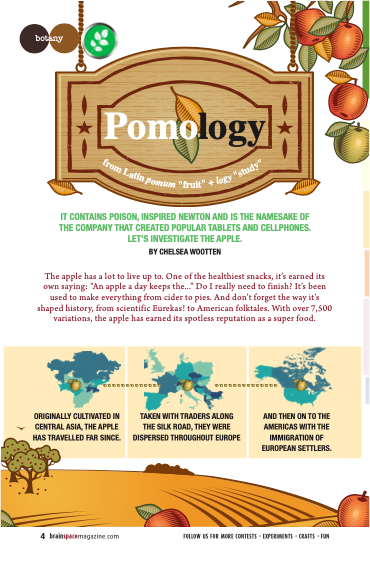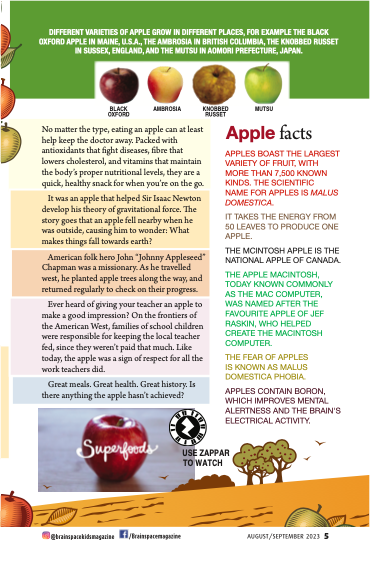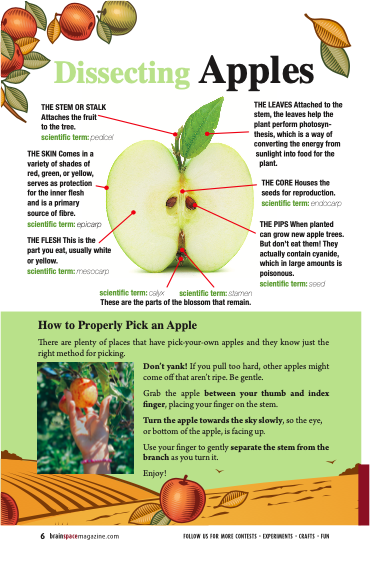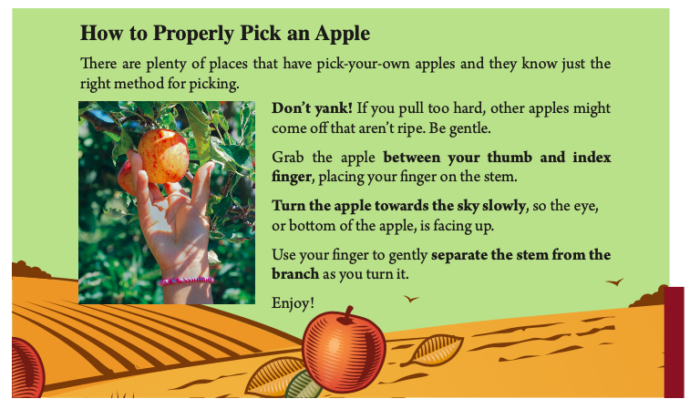
Pomology & Apple Dissection


It contains poison, inspired Newton and is the namesake of the company that created popular tablets and cellphones.
As one of the most consumed fruits in the world, the apple has a lot to live up to. One of the healthiest snacks, it’s earned its own saying: “An apple a day keeps the…” Do I really need to finish? It’s been used to make everything from cider to pies. And don’t forget the way it’s shaped history, from scientific Eurekas! to American folktales. With over 7,500 variations, the apple has earned its spotless reputation as a super food.
Today, there are several varieties from around the world, ranging from Red Delicious in America to the Pink Lady, aka Cripps Pink, which originated in 1973 by John Cripps and is a cross between a Golden Delicious and Lady Williams.
No matter the type, eating an apple can, at least help, keep the doctor away. Packed with antioxidants that fight diseases, fiber that lowers cholesterol, and vitamins that maintain the body’s proper nutritional levels, they are a quick, healthy snack for when you’re on the go.
It was an apple that helped Sir Isaac Newton develop his theory of gravitational force. The story goes that an apple fell nearby when he was outside, causing him to wonder: What makes things fall towards earth?
American folk-hero John “Johnny Appleseed” Chapman was a missionary. As he travelled the west, he planted apple trees along the way, and returned every year to check on their progress.
Ever heard of giving your teacher an apple to make a good impression? On the frontiers of the American West, families of school children were responsible for keeping the local teacher fed, since they weren’t paid that much. Like today, the apple was a sign of respect for all the work they did.
Great meals. Great health. Great history. Is there anything the apple hasn’t achieved?
Apple Facts
- Apples boast the largest variety of fruit with more than 8,000 known kinds. The scientific name for appes is Aplicus Rosacea.
- To produce one apple, it takes energy from 50 leaves.
- The McIntosh apple is the national apple of Canada.
- The Apple Macintosh, today known commonly as the Mac computer, was named after the favourite apple of Jef Raskin, creator of the computer.
- The fear of apples is known as Malusdomesticaphobia.
- Apples contain high levels of boron, which stimulates the electrical activity of the brain and increases mental alertness.
Dissecting An Apple
- THE STEM OR STALK attaches the fruit to the tree.
Scientific term: pedicel
- THE SKIN comes in a variety of shades of red, green, or yellow, serves as protection for the inner flesh and is a primary source of fibre.
Scientific term: epicarp
- THE FLESH this is the part you eat, usually white or yellow.
Scientific term: mesocarp - THE LEAVES attached to the stem, the leaves helpt the plant perform photosynthesis, which is a way of converting the energy from sunlight into food for the plant.
- THE CORE houses the seeds for reproduction.
Scientific term: endocarp
-
THE PIPS when planted can grow new apple trees. But don’t eat them! They actually contain cyanide, which in large amounts is poisonous.
Scientific term: seed

How to Properly Pick an Apple
There are plenty of places that have pick-your-own apples. At Stone Ridge Orchard in New York, they know just the right method for picking. Watch our Augmented Reality clip to learn from Mike Biltonen just how it’s done.
Don’t yank! If you pull too hard, other apples might come off that aren’t ripe. Be gentle.
Grab the apple between your thumb and forefinger, placing your forefinger on the stem.
Turn the apple towards the sky slowly, so the eye, or bottom of the apple, is facing up.
Use your finger to easily separate the stem from the branch as you turn it.
Enjoy!

